Thermal shock occurs when your roofing material goes through quick expansion and contraction due to rapid temperature changes. Such conditions are the result of extreme weather conditions like sudden thunderstorms or a significant decrease in temperature at night. This continuous change can cause various forms of damage to your roof, including cracks and leaks.
ManageMyRoof offers repair and replacement of roofing material, including thermal shock in roofing. We cover everything from replacing a missing shingle to installing an entire roof. Check out how our specialists can help with thermal shock.
You must have read about “thermal shock” in middle school science class. Our roof expands and contracts as a result of heat and cold. Although your roof is designed to endure the daily rigors of thermal shock, ultimately the materials deteriorate due to years of continuous cycle. This can easily affect the integrity and lifespan of your roof. Here are some key impacts of thermal shock:
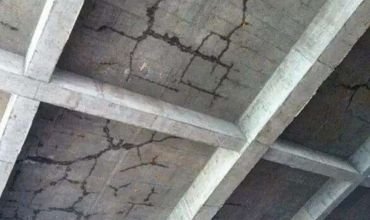
You don’t need much information on maintaining your roof to understand that any crack of bulking on your shingles is a bad sign. Unfortunately, this is among the most typical ways that heat shock damages your roof. Hence, as soon as you notice any abrupt changes in temperature, you should do a complete roof inspection to look for them. You can also call ManageMyRoof for a complete evaluation of your property.
Your roof is already far more vulnerable to leaks if it has cracks or bulking, particularly the gaps forming between the shingles and tiles. Especially if they’ve gotten smaller because of an unexpected cold. Even if they have widened, they might have been pushed out of alignment. As a result, your roof’s bottom layer becomes exposed, causing leaks to show up right away. Sometimes it can be difficult to identify this kind of roof damage.
Though the biggest of gaps can easily grab your attention and certain cracks and bulking can even be seen from the ground. Smaller gaps may go unnoticed until you take the time to climb your roof. And for that you need our roof inspection services.
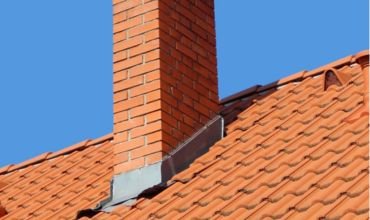
Thermal shock can cause harm to your flashing, which is the last way it can damage your roof. All the ‘connections’ of your roof are covered with flashing, that joins various components. The joining point of your roof and a skylight or the junction of your chimney are two examples of this. Metals are the most effective and widely used material for flashing. However, some of the roofers use alternative options that include plastics and polymers. Unfortunately, these materials are susceptible to thermal shock. Whereas, metal is far more resilient to damage. Therefore, it’s our first choice for flashings.
It is important to recognize the early warning signals of roof thermal shock, which often go unnoticed. When you make an appointment for consultation with our staff at ManageMyRoof, the professionals can take care of the problem right away. We can handle the situation before it gets out of control and leaves no option for an expensive roof repair. We look for signs like:
While you choose the right roofing material for your house or building, it is important to understand how different roofing materials react to temperature shock. Our professionals at ManageMyRoof understand that every material is different and these differences affect how well it can tolerate rapid temperature changes. Depending on your preference, budget, and the climate condition of the place, we suggest the best option for your roof.
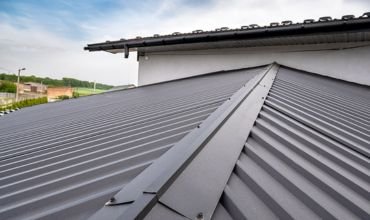
Among all the roofing materials, metal is the most durable option. A good-conditioned and well-maintained metal roof can endure forty to seventy years. Whether warping, splitting, or excessive shrinking/ expanding, a roof material will often show no trace of damage, even under extreme temperatures. However, it is still susceptible to thermal shock due to their tendency to expand or contract with temptation variations. Old roofs may slide, opening cracks and creating leaks. Therefore, before you move into your house, the professionals at ManageMyRoof advise having a house inspection. If you are not inspecting them with an expert’s eye, you can easily miss a lot of ‘bad signs.’
This is the most common choice of residential clients, but still, Asphalt Shingles are more vulnerable to thermal shock when compared to metal. Even though this material’s tiles and shingles are thinner than those made of concrete, they will nonetheless crack. These types of roofs do, of course, have benefits, as they are far easier to install and far less expensive. They give modular design and are easy to take out and replace. However, they crack under continuous temperature changes.
Despite the many advantages of a concrete tile roof, we always suggest our clients to avoid getting one if they reside in a region where thermal shock is common. Such type of roofing material has a tendency to crack, which is not ideal. Nevertheless, these shingles and tiles are heavy and durable creatures. They are indeed a good roofing material if temperature swings in your area are not too extreme.

Because they expand and contract less than other materials, clay tiles are a popular option in hot areas. They are more resilient to abrupt temperature changes than asphalt or concrete tiles. This is because of their lower rates of thermal expansion, which indicated they experience less stress during temperature fluctuations. Moreover, they offer outstanding thermal mass qualities, which help them absorb heat during the day and release it gradually at night. This mechanism supports the house’s energy efficiency and assists in regulation of interior temperature.
There are many benefits and drawbacks of having wood shake roofs and other types of timber roof construction. All in all, our experts suggest that wood is a fairly good material to tolerate temperature shock. They generally handle thermal shock well due to their natural resistance to temperature changes. While there is still a chance of experiencing some damages, it is typically minimal as compared to previously mentioned materials. However, regular maintenance is still necessary to avoid rot and other issues over time.
Again, because of their natural characteristics, slate and tile roofs are typically more resistant to thermal shock than other roofing materials. However, this doesn’t imply they are completely immune to damage. Sudden temperature variations can still cause slate or tiles to expand and contract quickly, which can easily cause fissures and cracks. We know, despite being a durable stone, slate can experience cracking when subject to high heat, which can cause water problems and damage to your house. In short, it may eventually cause the roofing system to further deteriorate and even leak.
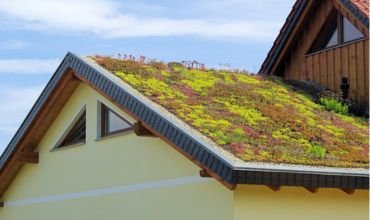
Green roofs or vegetative roofs, on the other hand, provide special benefits in regards to thermal shock. When you install such a type of roof, the soil and plant layers provide excellent insulation, which helps in moderating the temperature swings. Overall, this insulation reduces the amount of thermal expansion and contraction that underlying roofing material undergoes. Additionally, the moisture retained by green roofs might aid in cooling the roof surface during hot weather.
By now, you must have understood what thermal shock is in roofing and how it can significantly impact the integrity of your house. It can lead to cracks, leaks, and premature wear, which can affect the curb appeal of your property.
At ManageMyRoof, we offer practical solutions to protect your roof, as we understand the difficulties that come with extreme temperature fluctuations. The following is the outline of services we provide to repair thermal shock damage:
Our team will start off with conducting comprehensive roof assessments to locate the vulnerabilities and potential risks. The experts have a close look at signs associated with thermal shock. This will allow us to make a tailored plan for your specific needs.
When you opt for our preventive maintenance program, you get scheduled inspection and minor repairs. This helps in keeping the optimal condition of your roof and prevents small issues from escalating into costly repairs.
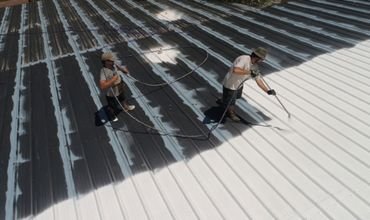
We recommend our clients to get elastomeric coatings as they act as a flexible protective layer that allows for thermal movement. This lowers the possibility of leaks and cracks and provides reflective options to cool the surface.
As for our roof restoration services, we use cutting-edge repair techniques and coatings. This helps expand the lifespan of your roof and save your money as compared to complete re-roofing.
In case of sudden damage or leaks, our emergency response team is prepared to promptly inspect. We can quickly implement efficient solutions to prevent further water damage to your property.
You can now easily safeguard your roof, knowing how thermal shock affects your roof and which material handles it better. And if the situation gets out of control, then you can always rely on our professionals at ManageMyRoof. Just bear in mind that maintenance is still necessary to upkeep your roof in optimal condition, regardless of how well-made it is.
Thermal shock is a result of frequent temperature fluctuation which leads to cracks, leaks, and gaping in your roofing materials.
The thermal shock method is a procedure that tests the durability of roofing materials. Professionals expose such materials to extreme temperature changes.
Thermal shock in construction can appear as gaps in expansion joints, cracking of concrete tile roofs, etc.
Make sure your roof is completely insulated, apply reflective coating, choose heat resistant materials, ensure proper ventilation, use lighter color paints, etc.
Common roofing materials that are resistant to thermal shock are clay and concrete tiles, metal roofs, vegetative roofs, and aluminum composite panels.
Metal roofs are considered the most vulnerable to thermal shock because of their high thermal conductivity.
Leave a Reply